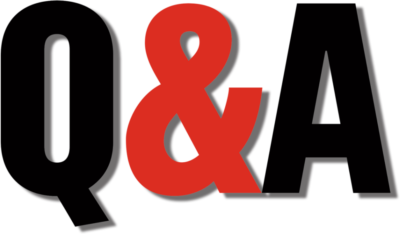“How do you interpret parallels? What is their energy? Are they comparable to any other aspects? I’ve heard that they’re kind of like conjunctions in feeling/intensity but can mitigate the potential “negatives” of the interaction between two planets… Also can you go so far as to use the Nodes and angles in declinations?”
Let’s take a little time to define parallels and declination before we hop into interpreting them. Planets are said to be parallel when they are at the same  degree of declination above the equator. Declination is basically the same thing as latitude, only measured from the heavens via the celestial sphere. (The celestial sphere is–well, imagine Earth’s latitude and longitude expanded out into space, so that there is one big bubble encasing the Earth. This is how we pinpoint where objects are.) We measure declination North and South of the Earth’s equator (projected out into space). This is different from the path of the Sun, which we call the ecliptic. Remember this, because we’re coming back to it.
degree of declination above the equator. Declination is basically the same thing as latitude, only measured from the heavens via the celestial sphere. (The celestial sphere is–well, imagine Earth’s latitude and longitude expanded out into space, so that there is one big bubble encasing the Earth. This is how we pinpoint where objects are.) We measure declination North and South of the Earth’s equator (projected out into space). This is different from the path of the Sun, which we call the ecliptic. Remember this, because we’re coming back to it.
Planets are usually measured in terms of longitude (those are the vertical lines beginning at the Prime Meridian at Greenwich, England. But when we take declination into account, we are also measuring them in terms of latitude–up to 90 degrees above (north) or below (south) the equator. We have not one coordinate, but two.
Why astrology has not followed up much on declination is a mystery to me. After all, we live in a world with at least three dimensions. I’ve read that real research into declination only began in the 1930’s. I’ve heard that it’s used more often in horary. If two planets are at the same degree north or south from the equator, wouldn’t it make sense to think that they had an effect on one another? If two planets are at the same degree longitude, we call it a conjunction. If two planets are at the same degree north or south of the equator, we call them parallel. If they are the same degree straddling the equator, north and south, we call them contra-parallel.
I’ve been watching them for most of my astrological life. I’ve come to the conclusion that they matter a great deal in natal astrology, but have a much less effect in synastry–so much so that I’ve stopped noting them between charts. If my Venus is parallel my Saturn, that is going to have much more clout than if my Venus is parallel your Saturn. However, if my Venus is parallel my Saturn which is then parallel your Saturn…well, you can see how things can get out of hand in synastry. Better off studying the things that really do make an impact. According to our favorite Rule of Three–if there is something significant to be found between the charts, it will be found elsewhere, in a much more obvious place. In synastry, it’s very easy to miss the forest for the trees.
Natally, a parallel works much like a conjunction, only it’s less erratic and less obvious. Conjunctions are volatile. Parallels seem to blend their energies more easily. Why this would be so is a mystery, unless there is some unknown law in the universe that states that things which are similar horizontally are more stable than things which are similar vertically. (Any math geniuses out there?) However, conjunctions bring conflicting energies into focus, whereas parallels seem to blend. Imagine you have a Venus/Pluto conjunction. You have power issues, jealousy issues, control issues, with a lot of intense encounters that cause a rearrangement of your entire value system and allow you to experience love in entirely new ways. Venus/Pluto parallel is different. It is more like creating a new planetary flavour, for lack of a better word. Take mocha. It’s not coffee and it’s not chocolate, but some third thing that enhances the eating/drinking experience. So you have Venus/Pluto: your Venus will be more Plutonian in nature, more intense, more driven, more passionate. Your Pluto will be more inclined to partnership and putting its intensity into relational issues. But it won’t, in general, offer the distinct experiences of a natal conjunction. (I would like to spend some time researching triggers to these parallels to see what occurs–if anyone knows of any research in this area, I’d like to hear about it.) Parallels always enhance the understanding of the way a planet operates in life, and may operate in an oblique way in the way they colour experience. If you have a client whose life seems to have a ‘theme’ that you can’t find in the chart, check the parallels for clues.
Contra-parallels seem to act more like oppositions, though not as extreme. Rather than two energies in conflict, I tend to think of them as a gentle swinging back and forth. They don’t create a new flavour, like the parallels, but rather indicate that there is a natural balance and a natural momentum between the two planets. In this way a contra-parallel can serve to mitigate the negatives of the two energies, unless the natal indicates that both planets are problematic. Then the swing won’t be so easy, and the differences in influence between the planets will be hard to sort out from one another.
There are a lot of astrologers more well-versed in declination and its uses than I am, so I don’t know what to say about the Ascendant or the Nodes and how declinations affect them. The Sun can only be 23 degrees north or south of the equator, so the Moon would have to cross its ecliptic within that narrow band. The Ascendant already takes both time and place for its calculation, therefore is already three-dimensional. If anyone has any research on this, I’m willing to be convinced.
The most interesting research in this area has to do with the Sun’s 23 degree limit and whether planets are within or without those boundaries. The Moon, Mercury, Venus and Mars slide in and out all the time. Saturn and Neptune (a strange pairing) never go out. The Moon has a nine year cycle of being in bounds and out of bounds.
I wonder if it’s a ‘seeding’ time when the planets are within the ecliptic/equatorial band–much the way it is when Pluto’s elliptical orbit brings it closer to us than Neptune. The planets that are ‘seeded’ by the Sun would then go beyond the band to carry their inspiration forward. But I suppose this kind of energy would have more of a generational influence.
We have a lot of work ahead of us…
Hi, Folks–
A few words before we get going on the Q&A:
The computer is in the land of the Geniuses and Geeks. In the meantime I’ve dug out an old one that doesn’t have quite enough ooomph for my Solar Fire software, so readings and classes will have to be postponed for another week. I can email properly now (as opposed to thumbing it on the iPod), so I will be in touch with you if you have something scheduled with me.
I’ve noticed on this rickety old computer that this site is damn near unreadable using Windows 98, despite a brand new monitor. Is anyone else having this problem? I’m very fond of this simple layout, but if it’s impossible to read maybe it’s time for a shift. Email me if you’re having difficulty.
Hope everyone had a happy holiday. I’ll save my piece on astrology and the Easter Bunny for next year…
Now, back to the heavens.

Hi Dawn,
thanks for your thoughts! The mocha analogy totally makes sense to me. I recently started looking at declinations and discovered my Saturn and Neptune are parallel my Sun and it was like finding the last missing link I’ve always wondered about in re: my chart and my temperament. I can certainly see what you’re saying in that it has less to do with the dynamic experiences of a conjunction though.
As per your thoughts on declinations in synastry- do you think then, parallels could potentially “echo” energies already present in say, a synastry comparison or composite, but perhaps not create it’s own distinct energy?
Thanks again, looking forward to continuing to read your thoughts!
Hi Stephanie,
Yes, echo is a good word to use. A parallel would vibrate to what is already there, and perhaps enhance it, for better or worse.
Hi Dawn
sorry to hear about the computer problems and thanks for this post. Declination is indeed not used as much as it should be. Have you come across Paul F Newman’s ‘The Steps of the Sun’ which is a very interesting book on declination.
Here is the link for the review I wrote, with details of how to obtain the book, which may stimulate your reader’s interest to research more into this fascinating and useful facet of the astrologer’s toolbox!
http://anne-whitaker.com/2009/12/23/winter-solstice-book-review-the-steps-of-the-sun-by-paul-f-newman/
Best wishes from Anne ( Mars and Uranus both out-of-bounds by declination…..)
Hi, Anne–
Thanks for the link. I’ve heard of the book but not yet read it, so I’m happy to refer folks to someone who has.